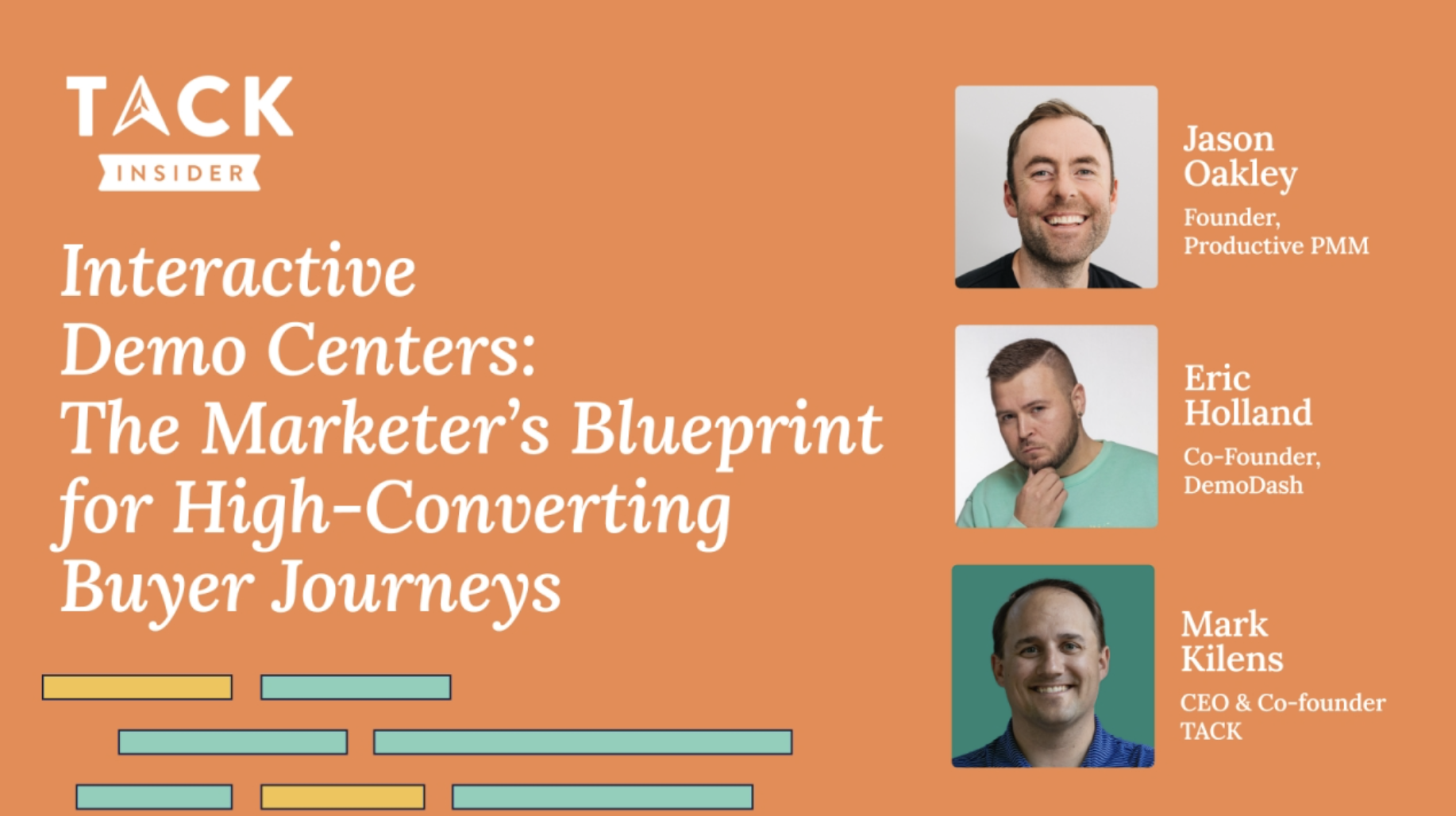Hosted by: Mark Kilens, CEO & Founder at TACK
Speakers: Melissa Moody, Founder at Matcha
Overview
Great marketing starts long before the campaign, it starts with the product. Drawing from two decades of experience across global tech giants and nimble startups, Melissa broke down how teams can break silos, sync timelines, and embed marketing directly into product development to fuel real growth.
Whether you’re working at a 10-person startup or a 10,000-person enterprise, here’s how to ensure product and marketing are not just speaking to each other—but building together.
Check out the full slides of the webinar
1. It Starts with the User—Always
Melissa opened with a foundational principle from her 14-year tenure at Google: “Focus on the user and all else will follow.” At Google, this wasn’t just philosophy—it shaped every product decision, marketing pitch, and team structure.
“It became a mantra I still carry today. I know it as well as the bedtime songs I sing to my kids.”
The most successful companies she’s seen—whether it’s Pinterest, Asana, or Airbnb—bake user empathy into both their product and marketing DNA. For startups and scaleups alike, this means prioritizing user experience not just at launch, but in how you structure teams and measure success.
2. Understand the Role of Product Marketing as the Bridge
In large organizations, marketing and product often function in silos, with disconnected goals and feedback loops. That’s why the product marketing role was created: to serve as the connective tissue between product managers and go-to-market teams.
The product marketer isn’t just responsible for messaging—they should deeply understand user pain points, product roadmaps, and competitive positioning. At its best, this role ensures marketing strategies are rooted in real product value and user needs.
3. Align on Pace, Not Just Plans
Misalignment between product and marketing often comes down to timing. Melissa emphasized three key habits to stay in sync:
- Don’t get ahead of the roadmap. Avoid promoting features before they’re built or validated—it’s wasted effort if the product pivots.
- Move fast, but with signals. If five users mention the same feature or feedback, take that as a signal and move. Don’t wait for 50.
- Sync your sprint cycles. Know how your product team ships—weekly, biweekly, quarterly—and plan marketing efforts around that cadence.
4. Build a Communication Cadence—and Stick to It
You can’t align if you don’t talk. Melissa recommends formalizing product-marketing conversations—even if they’re just 15-minute check-ins. Here’s how:
- Create structured meetings between marketing and product leads (e.g., weekly or biweekly).
- Overshare wins and experiments. Use short Loom videos or Slack updates to showcase what marketing is doing. Visibility builds trust.
- Define a shared language. Terms like “conversion” or “campaign” might mean different things to each team. Align early on key definitions.
5. Create Shared Goals, Not Parallel Tracks
In some teams, product focuses on revenue while marketing chases user growth. That split can quietly erode alignment. Instead, Melissa suggests:
- Agree on business goals early. Whether it’s revenue, retention, or expansion, make sure both teams are building toward the same outcomes.
- Use the 80/20 rule intentionally. Decide how much time is spent on “run-the-business” execution versus experimentation—and agree on that mix together.
- Infuse marketing into the product. Look for in-product opportunities to add value—referrals, nudges to upgrade, feature discovery, etc.
Pull Quote
“If you’re not looking for marketing touchpoints inside your product, you’re missing massive low-hanging fruit.”
Key Takeaways
- The best growth strategies start with deep user understanding—not marketing tactics.
- Product marketing should be a strategic, embedded role that connects insights across teams.
- Don’t let marketing get too far ahead of product; pace and rhythm matter as much as goals.
- Overcommunication builds alignment—set the meeting, send the Loom, clarify the language.
- At any scale, shared goals and co-ownership of outcomes beat parallel execution.






